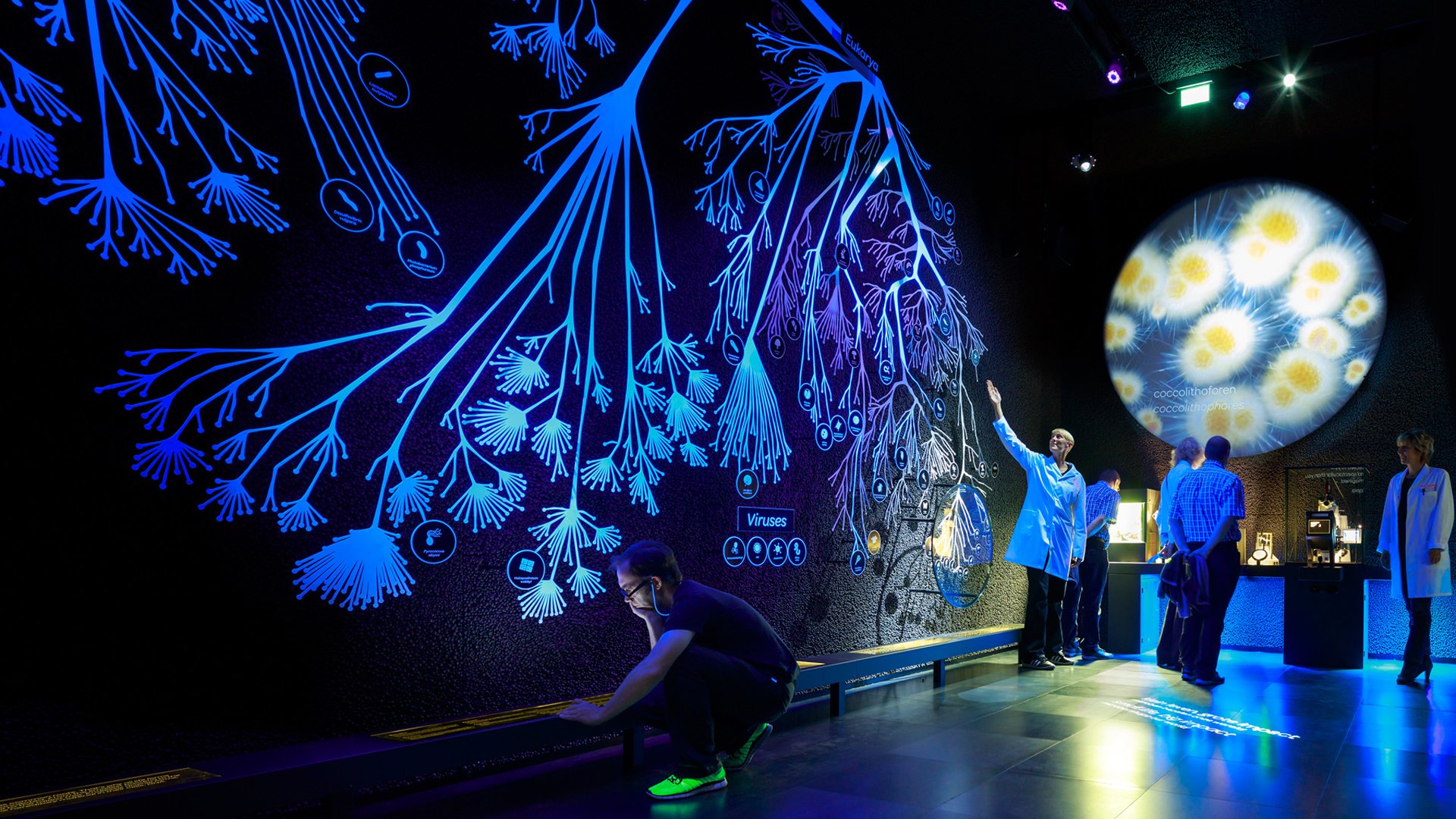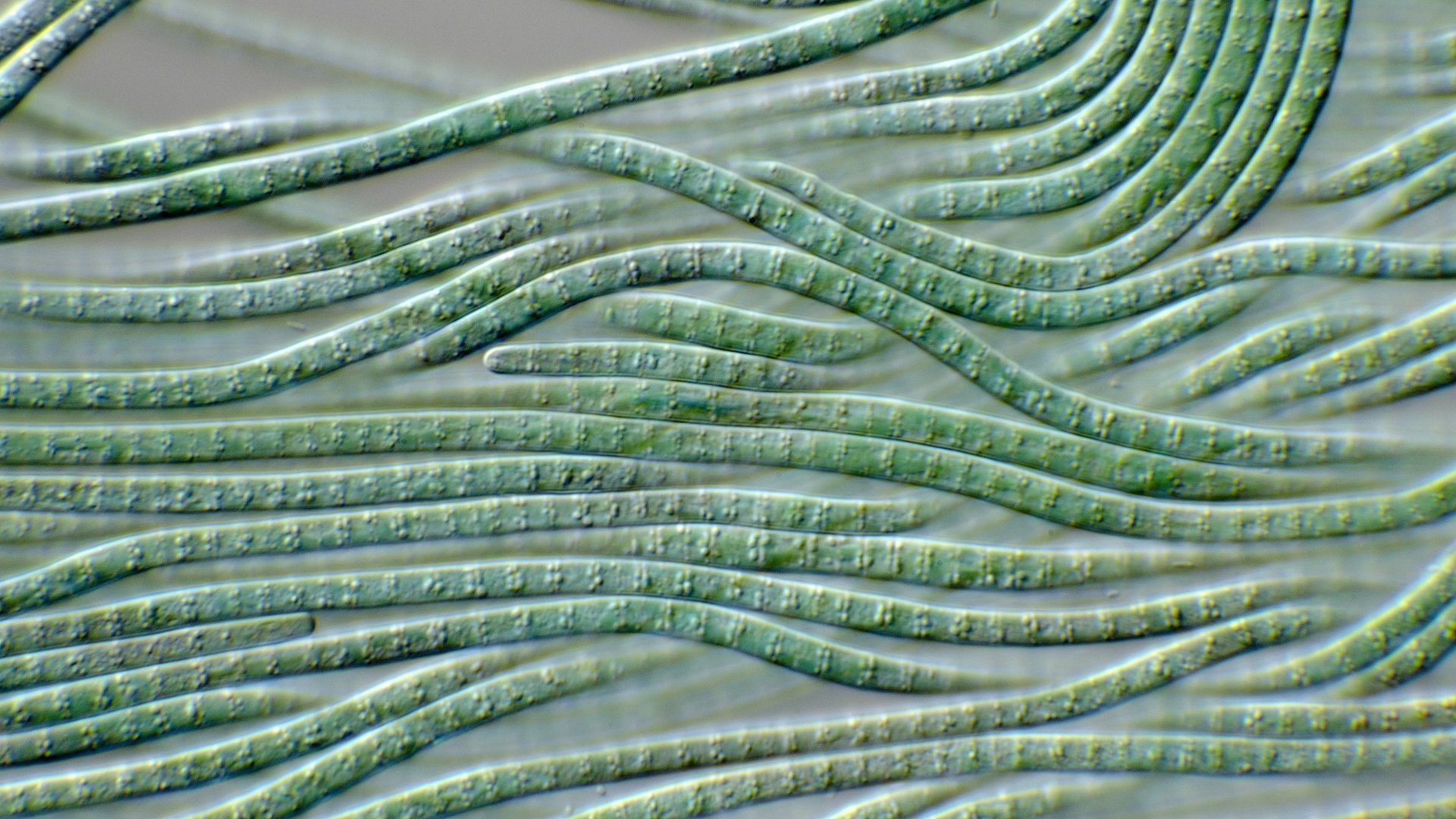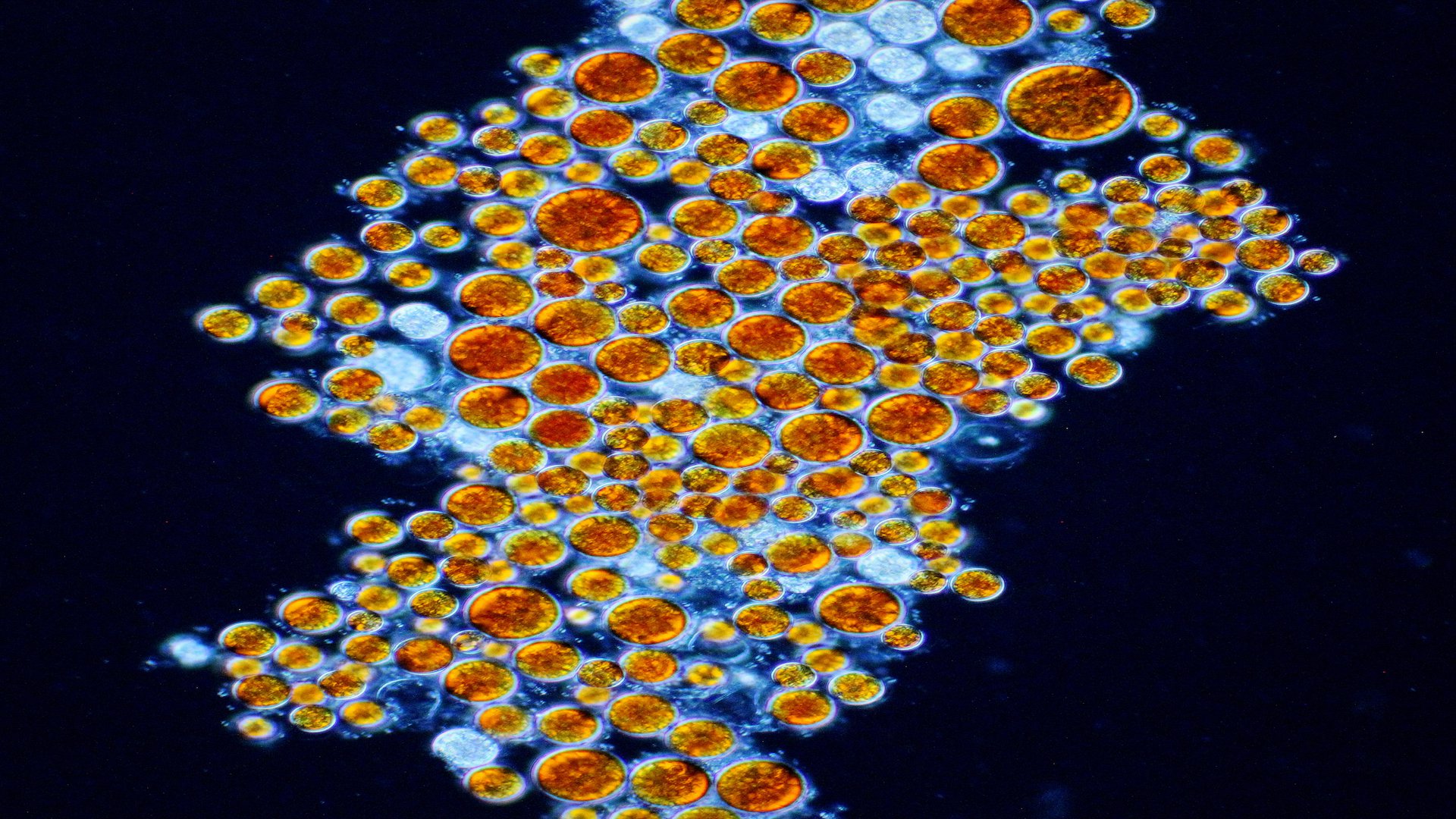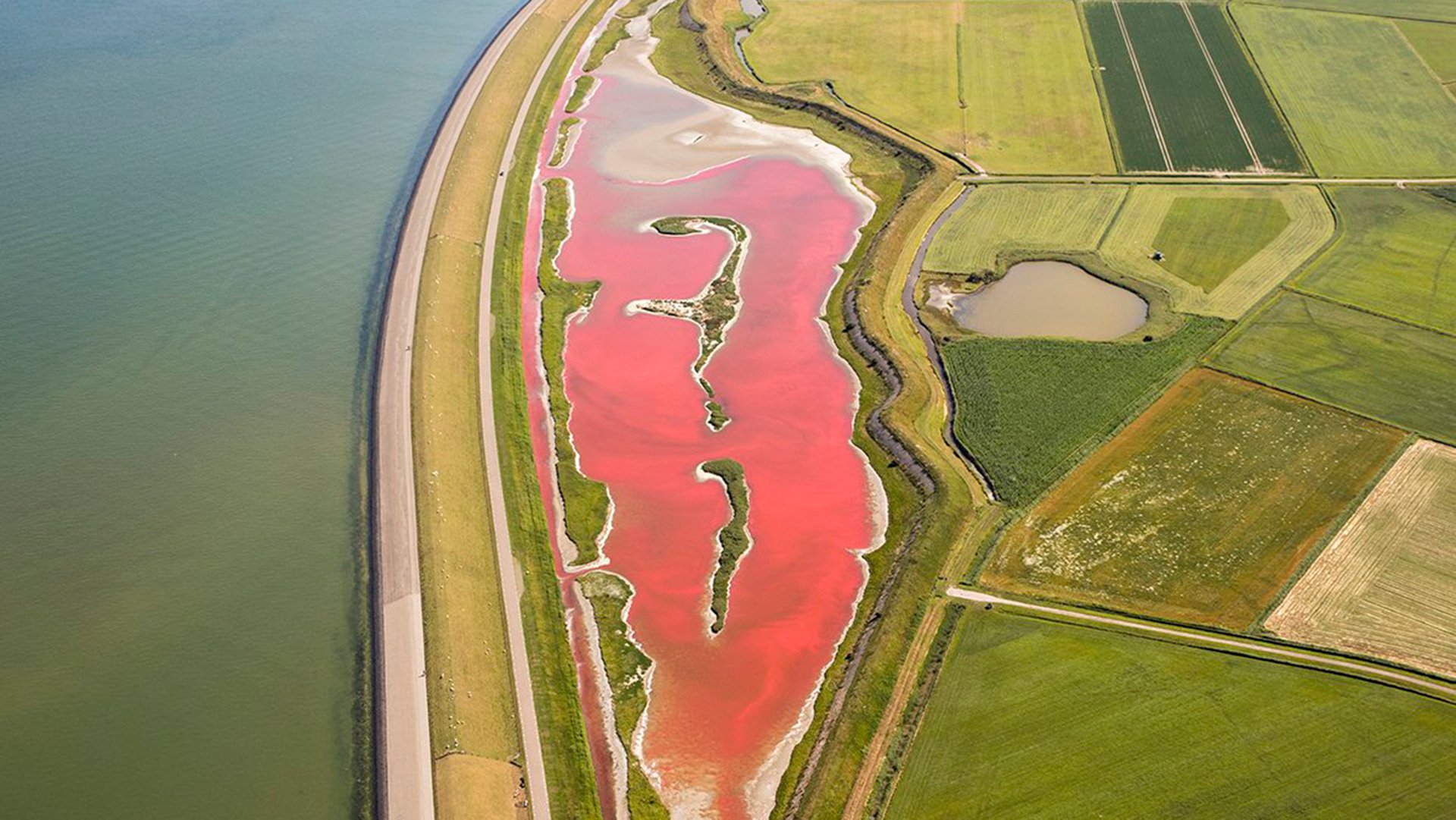Throughout the tree of live
The term ‘alga’ is the general name for various groups of simple organisms that use sunlight as a source of energy and produce oxygen (O2) in doing so. This is called photosynthesis. This makes them similar to plants. However, unlike plants, they do not have complex structures, such as roots, stalks or leaves. Algae can be unicellular or multicellular. Multicellular algae or macroalgae are also known as seaweed. You often find it washed up on the beach. Unicellular algae or phytoplankton are present in enormous numbers. There are between 100,000 and 100,000,000 microalgae in one litre of water from the North Sea. Algae are found throughout the tree of life: from bacteria to eukaryotes. They are the foundation of the food chain and produce half of the earth’s oxygen.

‘Alga’ is the general name for various groups of simple organisms which can be found throughout the tree of life.
Good or bad?
Well-known algae are cyanobacteria, better known as blue-green algae. Unfortunately especially in the negative sense. During hot summers, the numbers of blue-green algae can increase dramatically in ditches and lakes. The annoying thing about these ‘algal blooms’ is that some produce toxins which are hazardous to people and animals. You can become ill if you swallow the water. The 'algal blooms' make the water therefore temporarily unsuitable for swimming. They are, however, essential to our existence. Cyanobacteria are a very old life form. About three billion years ago, cyanobacteria started supplying the atmosphere with oxygen through photosynthesis – an atmosphere which, up until that point, had mainly consisted of carbon dioxide, nitrogen and water vapour. Without this oxygen, life as we know it today could never have developed. They are of major importance to our planet. They form the basis of the food chain. And in addition, they produce about 50% of the total oxygen on earth and absorb enormous amounts of carbon dioxide from the atmosphere, helping to combat the greenhouse effect.

Blue-green algae have a bad reputation, but are essential to our existence.
Not all green
Most microbes are colourless, except for algae. This is because they are full of pigment which they need for their photosynthesis. Al lot of algae species have green pigments. The blue-green colour comes from the two different types of pigment they use to absorb light energy: a blue pigment and a green pigment. There are also golden, brown and red algae. They use other types of pigment to capture other wavelengths of light. And because different species use different wavelengths of light, they do not compete with each other and many species of algae can coexist as phytoplankton.

The pigment in the red alga Haematococcus pluvialis enters flamingos via small crustaceans and turns their feathers pink.
Flamingo pink
And just as algae can color water completely green, they can also do this in other colors. A well-known example is the bright pink lakes in the South American Atacama Desert. But the same occurence sometimes happens closer to home. For example, during a heat wave in 2017, a lake at Texel, called Wagejot, turned completely pink. The Wagejot is a seepage pond. It is fed by groundwater that is pushed upwards under pressure from the adjacent Wadden Sea. Due to the drought and high temperatures, salinity in the lake was unprecedentedly high, comparable to the salt lakes in the Atacama. These extreme conditions are fatal for many organisms, but some species thrive. Including Dunaliella salina, a micro-alga of the same order as the algae that give flamingos in the Atacama their pink color. Dunaliella is a halophile (‘salina’ is Latin for salt) and therefore grows well in extremely salty conditions. A high salt content is often accompanied by a lot of sun, as was the case with Wagejot. To protect against the intense UV radiation, this green algae produces large amounts of red pigment called beta carotene. Beta carotene is an antioxidant and is converted by our body into vitamin A. D. salina is therefore a popular food supplement and cosmetic addition.

The alga Dunaliella salina colored the Wagejot pond on Texel bright pink in 2017.
The green gold
Algae are also known as ‘the green gold'. The biotechnological application possibilities are endless. Algae only need sunlight and CO2 to grow and reproduce extremely fast. Without polluting the environment. Algae can be cultivated on a large scale without giving up valuable agricultural land. For example, they produce CO2-neutral bio-ethanol, an alternative to the malaria vaccine, and sustainable oil for cooking. But they also clean heavily polluted mine water, reduce methane emissions in the livestock sector, and algae residues can be transformed into organic asphalt. Algae cultivation is still relatively expensive, but commercial feasibility is only a matter of time. Researchers are making great strides in discovering opportunities to produce algae on a larger scale, more efficiently and cheaper.
